Libra 源码分析:打通Libra CLI客户端与libradb模块
这篇文章目的是打通Libra CLI 命令行工具与底层数据库模块libradb之间的关系 Libra Cli指的是 Libra上的第一笔交易 中提到的命令行工具。 libradb 指的是storage/libradb模块 。
这篇文章目的是打通Libra CLI 命令行工具与底层数据库模块libradb之间的关系 `Libra Cli `指的是 [Libra上的第一笔交易](https://learnblockchain.cn/docs/libra/docs/my-first-transaction/#克隆并编译-libra-core) 中提到的命令行工具。 `libradb` 指的是`storage/libradb`模块 。 ## Libra CLI客户端实现 Libra CLI 客户端本身主要提供了 `account`, `transfer` 和 `query` 三个命令,其中每个命令还有若干子命令。这些命令中除了transfer是修改账本以外,其他都是直接查询的账本数据库。 ### 一个具体例子 这里就绕开CLI 客户端模块的枝枝蔓蔓,直接关注它最核心的部分。 我们找一个具体的子命令,追踪他的执行,然后看看他是怎么实现的。 `account create` 命令对应的就是 `AccountCommandCreate` 这个结构体,当我们敲下回车,在参数解析完毕以后就会进入execute函数。 #### 1. execute ```rust fn execute(&self, client: &mut ClientProxy, _params: &[&str]) ``` 第一个参数可以忽略,没有任何内容,第二个client是一个grpc client,就是与服务器的链接。` _params`则是空了,因为我们没有任何附加参数了。 这个函数会直接调用ClientProxy.create_next_account #### ClientProxy.create_next_account 1. 调用 `wallet.new_address` 获取新的地址, 这里的Wallet使用的是`WalletLibrary`,这个钱包中的私钥生成以及管理机制和比特币中的[BIP32](https://learnblockchain.cn/2018/09/28/hdwallet/)原理是完全一样,只是细节稍微不同。 我会在其他文章专门介绍钱包的实现。 2. 调用`get_account_data_from_address`从服务器上获取该新生成地址的账户信息。 `rust fn get_account_data_from_address( client: &GRPCClient, address: AccountAddress, key_pair: Option<KeyPair>, ) -> Result<AccountData>` 这个函数很简单就是调用`get_account_blob`然后对返回的信息封装成`AccountData`。 3. 调用`GRPCClient`的`get_account_blob` 获取`AccountStateBlob`以及`Version`信息 ```rust pub(crate) fn get_account_blob( &self, address: AccountAddress, ) -> Result<(Option<AccountStateBlob>, Version)>{ let req_item = RequestItem::GetAccountState { address }; let mut response = self.get_with_proof_sync(vec![req_item])?; ...//处理返回结果 } ``` 这个函数组装请求参数`GetAccountState`,然后就是调用`get_with_proof_sync`然后解码response。 4. 调用`GRPCClient`的`get_with_proof_sync` ```rust pub(crate) fn get_with_proof_sync( &self, requested_items: Vec<RequestItem>, ) -> Result<UpdateToLatestLedgerResponse> ``` 这个函数功能非常简单,就是调用`get_with_proof_async`,将异步转换为同步,同时会多次尝试。 具体代码也很简单就是一句话: ```rust let mut resp: Result<UpdateToLatestLedgerResponse> = self.get_with_proof_async(requested_items.clone())?.wait(); ``` 这里其实也体现了怎么使用future库。 5. GRPCClient.get_with_proof_async ```rust fn get_with_proof_async( &self, requested_items: Vec<RequestItem>, ) -> Result<impl Future<Item = UpdateToLatestLedgerResponse, Error = failure::Error>> ``` 这个函数做了两件事,一个是调用`update_to_latest_ledger_async_opt`发出请求,然后对结果进行验证,如果符合要求(主要是指validator的签名是否正确以及足够数量)。 `update_to_latest_ledger_async_opt`是一个`protobuf`自动生成的函数,可以直接忽略。 6. 服务端处理 客户端的请求发出以后,服务端处理代码位于`storage\storage_service`中 ```rust impl Storage for StorageService { fn update_to_latest_ledger( &mut self, ctx: grpcio::RpcContext<'_>, req: UpdateToLatestLedgerRequest, sink: grpcio::UnarySink<UpdateToLatestLedgerResponse>, ) { debug!("[GRPC] Storage::update_to_latest_ledger"); let _timer = SVC_COUNTERS.req(&ctx); let resp = self.update_to_latest_ledger_inner(req); provide_grpc_response(resp, ctx, sink); } ``` 其中的`update_to_latest_ledger_inner`简单处理以后就会走到`storage\libradb\lib.rs`中的`update_to_latest_ledger`。 ## libradb 所有libra中需要持久化存储的数据入口都在这里。 ```rust /// This holds a handle to the underlying DB responsible for physical storage and provides APIs for /// access to the core Libra data structures. pub struct LibraDB { db: Arc<DB>, ledger_store: LedgerStore, transaction_store: TransactionStore, state_store: StateStore, event_store: EventStore, } impl LibraDB { /// This creates an empty LibraDB instance on disk or opens one if it already exists. pub fn new<P: AsRef<Path> + Clone>(db_root_path: P) -> Self /// Persist transactions. Called by the executor module when either syncing nodes or committing /// blocks during normal operation. /// /// When `ledger_info_with_sigs` is provided, verify that the transaction accumulator root hash /// it carries is generated after the `txns_to_commit` are applied. pub fn save_transactions( &self, txns_to_commit: &[TransactionToCommit], first_version: Version, ledger_info_with_sigs: &Option<LedgerInfoWithSignatures>, ) -> Result<()> ; /// This backs the `UpdateToLatestLedger` public read API which returns the latest /// [`LedgerInfoWithSignatures`] together with items requested and proofs relative to the same /// ledger info. pub fn update_to_latest_ledger( &self, _client_known_version: u64, request_items: Vec<RequestItem>, ) -> Result<( Vec<ResponseItem>, LedgerInfoWithSignatures, Vec<ValidatorChangeEventWithProof>, )> /// Gets an account state by account address, out of the ledger state indicated by the state /// Merkle tree root hash. /// /// This is used by the executor module internally. pub fn get_account_state_with_proof_by_state_root( &self, address: AccountAddress, state_root: HashValue, ) -> Result<(Option<AccountStateBlob>, SparseMerkleProof)>; /// Gets information needed from storage during the startup of the executor module. /// /// This is used by the executor module internally. pub fn get_executor_startup_info(&self) -> Result<Option<ExecutorStartupInfo>>; /// Gets a batch of transactions for the purpose of synchronizing state to another node. /// /// This is used by the State Synchronizer module internally. pub fn get_transactions( &self, start_version: Version, limit: u64, ledger_version: Version, fetch_events: bool, ) -> Result<TransactionListWithProof>; ``` `LibraDB`只提供了有限的几个公共函数, ### save_transactions 这是共识模块达成共识以后,生成了新的 block,需要将这些Tx存储到账本中。 从参数中可以看出他既包含了Tx也包含了这些Tx的相关证明(Validator的签名)。 ### get_account_state_with_proof_by_state_root 用来查询账户在指定Merkle树下的状态. ### get_executor_startup_info 这个是`executor`内部使用. ### get_transactions 这个是`Synchronizer`内部使用 ### update_to_latest_ledger 这个函数式我们重点分析的对象。 ```rust /// This backs the `UpdateToLatestLedger` public read API which returns the latest /// [`LedgerInfoWithSignatures`] together with items requested and proofs relative to the same /// ledger info. pub fn update_to_latest_ledger( &self, _client_known_version: u64, request_items: Vec<RequestItem>, ) -> Result<( Vec<ResponseItem>, LedgerInfoWithSignatures, Vec<ValidatorChangeEventWithProof>, )> { ... // Fulfill all request items let response_items = request_items .into_iter() .map(|request_item| match request_item { RequestItem::GetAccountState { address } => Ok(ResponseItem::GetAccountState { ... //处理GetAccountState请求 query balance|sequence|account_state等命令 }), RequestItem::GetAccountTransactionBySequenceNumber { account, sequence_number, fetch_events, } => { ... //处理GetAccountTransactionBySequenceNumber请求 query txn_acc_seq命令 } RequestItem::GetEventsByEventAccessPath { access_path, start_event_seq_num, ascending, limit, } => { ... //query event } RequestItem::GetTransactions { start_version, limit, fetch_events, } => { //query txn_range命令 } }) .collect::<Result<Vec<_>>>()?; ... } ``` 这里针对用户的请求,分成四类分别处理。实际上这正是RequestItem的定义. ```rust pub enum RequestItem { GetAccountTransactionBySequenceNumber { account: AccountAddress, sequence_number: u64, fetch_events: bool, }, // this can't be the first variant, tracked here https://github.com/AltSysrq/proptest/issues/141 GetAccountState { address: AccountAddress, }, GetEventsByEventAccessPath { access_path: AccessPath, start_event_seq_num: u64, ascending: bool, limit: u64, }, GetTransactions { start_version: Version, limit: u64, fetch_events: bool, }, } ``` ## AccountState请求是如何处理的 ``` fn get_account_state_with_proof( &self, address: AccountAddress, version: Version, ledger_version: Version, ) -> Result<AccountStateWithProof> ``` 该请求的处理,调用的是LibraDB的`get_account_state_with_proof` 1. 调用`get_latest_version`读取数据库,或者最新的latest_version 2. 验证传递进来的ledger_version必须小于等于latest_version 3. 调用LedgerStore的`get_transaction_info_with_proof`获取指定Version的`txn_info`和`txn_info_accumulator_proof` 4. 调用`StateStore.get_account_state_with_proof_by_state_root`获取指定地址的`account_state_blob`和`sparse_merkle_proof` 5. 组装返回结果 走到这里我们终于把CLI 命令和数据库之间的关联起来了. 至于如何读取数据库的内容,请参考[Libra 中数据存储的 Schema](https://learnblockchain.cn/2019/07/01/Schema-for-data-storage-in-Libra/) ## 结束语 整个文章分文两部分: 一个是grpc的client实现,一个是grpc服务端实现, 整体框架还是非常清晰的。 Libra 作为一个联盟链,其数据结构设计尤其独特之处,整个过程我没有看到任何Block相关字样,都是围绕着Tx展开,这应该是他为了提高TPS所做的优化吧。 虽然Libra称之为BlockChain,但是这里面既没有Block也没有Chain,实际上是一个基于稀疏默克尔树的大状态机。 本文作者为深入浅出共建者:白振轩,欢迎大家关注他的[博客](http://stevenbai.top) 。 [深入浅出区块链](https://learnblockchain.cn/) - 打造高质量区块链技术博客,学区块链都来这里,关注[知乎](https://www.zhihu.com/people/xiong-li-bing/activities)、[微博](https://weibo.com/517623789)。
这篇文章目的是打通Libra CLI 命令行工具与底层数据库模块libradb之间的关系 Libra Cli指的是 Libra上的第一笔交易 中提到的命令行工具。 libradb 指的是storage/libradb模块 。
Libra CLI客户端实现
Libra CLI 客户端本身主要提供了 account, transfer 和 query 三个命令,其中每个命令还有若干子命令。这些命令中除了transfer是修改账本以外,其他都是直接查询的账本数据库。
一个具体例子
这里就绕开CLI 客户端模块的枝枝蔓蔓,直接关注它最核心的部分。 我们找一个具体的子命令,追踪他的执行,然后看看他是怎么实现的。
account create 命令对应的就是 AccountCommandCreate 这个结构体,当我们敲下回车,在参数解析完毕以后就会进入execute函数。
1. execute
fn execute(&self, client: &mut ClientProxy, _params: &[&str])第一个参数可以忽略,没有任何内容,第二个client是一个grpc client,就是与服务器的链接。_params则是空了,因为我们没有任何附加参数了。 这个函数会直接调用ClientProxy.create_next_account
ClientProxy.create_next_account
-
调用
wallet.new_address获取新的地址, 这里的Wallet使用的是WalletLibrary,这个钱包中的私钥生成以及管理机制和比特币中的BIP32原理是完全一样,只是细节稍微不同。 我会在其他文章专门介绍钱包的实现。 -
调用
get_account_data_from_address从服务器上获取该新生成地址的账户信息。rust fn get_account_data_from_address( client: &GRPCClient, address: AccountAddress, key_pair: Option<KeyPair>, ) -> Result<AccountData>这个函数很简单就是调用get_account_blob然后对返回的信息封装成AccountData。 -
调用
GRPCClient的get_account_blob获取AccountStateBlob以及Version信息
pub(crate) fn get_account_blob(
&self,
address: AccountAddress,
) -> Result<(Option<AccountStateBlob>, Version)>{
let req_item = RequestItem::GetAccountState { address };
let mut response = self.get_with_proof_sync(vec![req_item])?;
...//处理返回结果
}这个函数组装请求参数GetAccountState,然后就是调用get_with_proof_sync然后解码response。
- 调用
GRPCClient的get_with_proof_sync
pub(crate) fn get_with_proof_sync(
&self,
requested_items: Vec<RequestItem>,
) -> Result<UpdateToLatestLedgerResponse> 这个函数功能非常简单,就是调用get_with_proof_async,将异步转换为同步,同时会多次尝试。 具体代码也很简单就是一句话:
let mut resp: Result<UpdateToLatestLedgerResponse> =
self.get_with_proof_async(requested_items.clone())?.wait();这里其实也体现了怎么使用future库。
- GRPCClient.get_with_proof_async
fn get_with_proof_async(
&self,
requested_items: Vec<RequestItem>,
) -> Result<impl Future<Item = UpdateToLatestLedgerResponse, Error = failure::Error>> 这个函数做了两件事,一个是调用update_to_latest_ledger_async_opt发出请求,然后对结果进行验证,如果符合要求(主要是指validator的签名是否正确以及足够数量)。 update_to_latest_ledger_async_opt是一个protobuf自动生成的函数,可以直接忽略。
- 服务端处理
客户端的请求发出以后,服务端处理代码位于storage\storage_service中
impl Storage for StorageService {
fn update_to_latest_ledger(
&mut self,
ctx: grpcio::RpcContext<'_>,
req: UpdateToLatestLedgerRequest,
sink: grpcio::UnarySink<UpdateToLatestLedgerResponse>,
) {
debug!("[GRPC] Storage::update_to_latest_ledger");
let _timer = SVC_COUNTERS.req(&ctx);
let resp = self.update_to_latest_ledger_inner(req);
provide_grpc_response(resp, ctx, sink);
}其中的update_to_latest_ledger_inner简单处理以后就会走到storage\libradb\lib.rs中的update_to_latest_ledger。
libradb
所有libra中需要持久化存储的数据入口都在这里。
/// This holds a handle to the underlying DB responsible for physical storage and provides APIs for
/// access to the core Libra data structures.
pub struct LibraDB {
db: Arc<DB>,
ledger_store: LedgerStore,
transaction_store: TransactionStore,
state_store: StateStore,
event_store: EventStore,
}
impl LibraDB {
/// This creates an empty LibraDB instance on disk or opens one if it already exists.
pub fn new<P: AsRef<Path> + Clone>(db_root_path: P) -> Self
/// Persist transactions. Called by the executor module when either syncing nodes or committing
/// blocks during normal operation.
///
/// When `ledger_info_with_sigs` is provided, verify that the transaction accumulator root hash
/// it carries is generated after the `txns_to_commit` are applied.
pub fn save_transactions(
&self,
txns_to_commit: &[TransactionToCommit],
first_version: Version,
ledger_info_with_sigs: &Option<LedgerInfoWithSignatures>,
) -> Result<()> ;
/// This backs the `UpdateToLatestLedger` public read API which returns the latest
/// [`LedgerInfoWithSignatures`] together with items requested and proofs relative to the same
/// ledger info.
pub fn update_to_latest_ledger(
&self,
_client_known_version: u64,
request_items: Vec<RequestItem>,
) -> Result<(
Vec<ResponseItem>,
LedgerInfoWithSignatures,
Vec<ValidatorChangeEventWithProof>,
)>
/// Gets an account state by account address, out of the ledger state indicated by the state
/// Merkle tree root hash.
///
/// This is used by the executor module internally.
pub fn get_account_state_with_proof_by_state_root(
&self,
address: AccountAddress,
state_root: HashValue,
) -> Result<(Option<AccountStateBlob>, SparseMerkleProof)>;
/// Gets information needed from storage during the startup of the executor module.
///
/// This is used by the executor module internally.
pub fn get_executor_startup_info(&self) -> Result<Option<ExecutorStartupInfo>>;
/// Gets a batch of transactions for the purpose of synchronizing state to another node.
///
/// This is used by the State Synchronizer module internally.
pub fn get_transactions(
&self,
start_version: Version,
limit: u64,
ledger_version: Version,
fetch_events: bool,
) -> Result<TransactionListWithProof>;LibraDB只提供了有限的几个公共函数,
save_transactions
这是共识模块达成共识以后,生成了新的 block,需要将这些Tx存储到账本中。 从参数中可以看出他既包含了Tx也包含了这些Tx的相关证明(Validator的签名)。
get_account_state_with_proof_by_state_root
用来查询账户在指定Merkle树下的状态.
get_executor_startup_info
这个是executor内部使用.
get_transactions
这个是Synchronizer内部使用
update_to_latest_ledger
这个函数式我们重点分析的对象。
/// This backs the `UpdateToLatestLedger` public read API which returns the latest
/// [`LedgerInfoWithSignatures`] together with items requested and proofs relative to the same
/// ledger info.
pub fn update_to_latest_ledger(
&self,
_client_known_version: u64,
request_items: Vec<RequestItem>,
) -> Result<(
Vec<ResponseItem>,
LedgerInfoWithSignatures,
Vec<ValidatorChangeEventWithProof>,
)> {
...
// Fulfill all request items
let response_items = request_items
.into_iter()
.map(|request_item| match request_item {
RequestItem::GetAccountState { address } => Ok(ResponseItem::GetAccountState {
... //处理GetAccountState请求 query balance|sequence|account_state等命令
}),
RequestItem::GetAccountTransactionBySequenceNumber {
account,
sequence_number,
fetch_events,
} => {
... //处理GetAccountTransactionBySequenceNumber请求 query txn_acc_seq命令
}
RequestItem::GetEventsByEventAccessPath {
access_path,
start_event_seq_num,
ascending,
limit,
} => {
... //query event
}
RequestItem::GetTransactions {
start_version,
limit,
fetch_events,
} => {
//query txn_range命令
}
})
.collect::<Result<Vec<_>>>()?;
...
}这里针对用户的请求,分成四类分别处理。实际上这正是RequestItem的定义.
pub enum RequestItem {
GetAccountTransactionBySequenceNumber {
account: AccountAddress,
sequence_number: u64,
fetch_events: bool,
},
// this can't be the first variant, tracked here https://github.com/AltSysrq/proptest/issues/141
GetAccountState {
address: AccountAddress,
},
GetEventsByEventAccessPath {
access_path: AccessPath,
start_event_seq_num: u64,
ascending: bool,
limit: u64,
},
GetTransactions {
start_version: Version,
limit: u64,
fetch_events: bool,
},
}AccountState请求是如何处理的
fn get_account_state_with_proof(
&self,
address: AccountAddress,
version: Version,
ledger_version: Version,
) -> Result<AccountStateWithProof> 该请求的处理,调用的是LibraDB的get_account_state_with_proof
- 调用
get_latest_version读取数据库,或者最新的latest_version - 验证传递进来的ledger_version必须小于等于latest_version
- 调用LedgerStore的
get_transaction_info_with_proof获取指定Version的txn_info和txn_info_accumulator_proof - 调用
StateStore.get_account_state_with_proof_by_state_root获取指定地址的account_state_blob和sparse_merkle_proof - 组装返回结果
走到这里我们终于把CLI 命令和数据库之间的关联起来了. 至于如何读取数据库的内容,请参考Libra 中数据存储的 Schema
结束语
整个文章分文两部分: 一个是grpc的client实现,一个是grpc服务端实现, 整体框架还是非常清晰的。 Libra 作为一个联盟链,其数据结构设计尤其独特之处,整个过程我没有看到任何Block相关字样,都是围绕着Tx展开,这应该是他为了提高TPS所做的优化吧。 虽然Libra称之为BlockChain,但是这里面既没有Block也没有Chain,实际上是一个基于稀疏默克尔树的大状态机。
本文作者为深入浅出共建者:白振轩,欢迎大家关注他的博客 。
深入浅出区块链 - 打造高质量区块链技术博客,学区块链都来这里,关注知乎、微博。
- 发表于 2019-07-01 10:23
- 阅读 ( 5305 )
- 学分 ( 20 )
- 分类:Libra

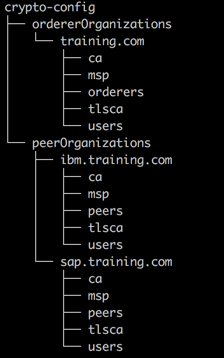

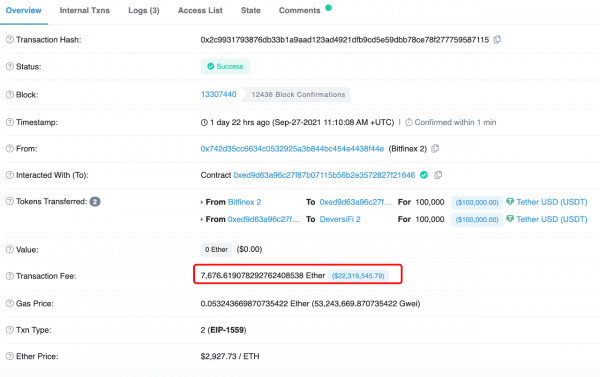
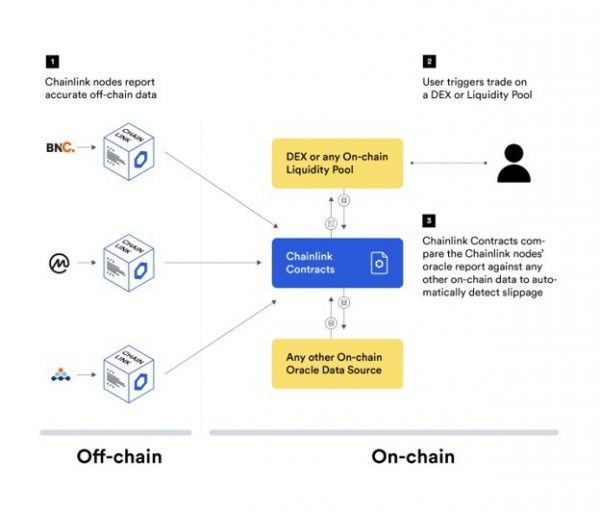
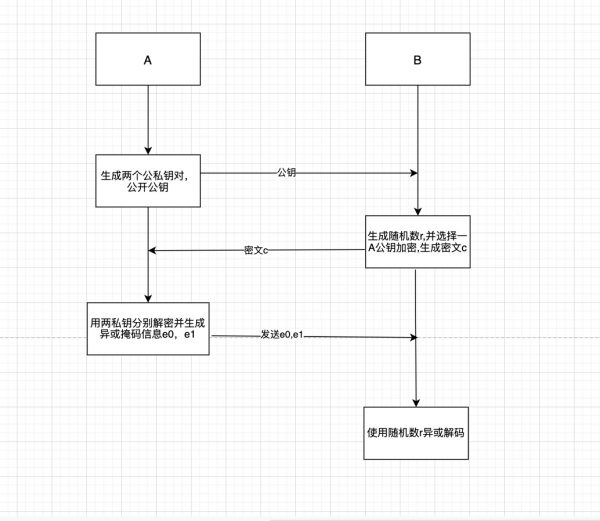
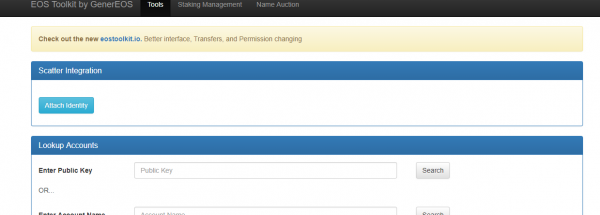

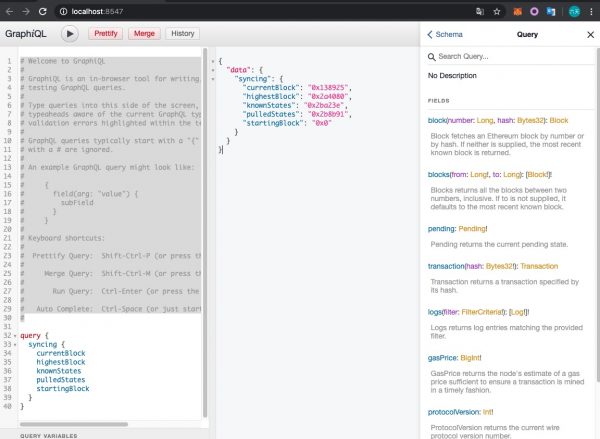
评论